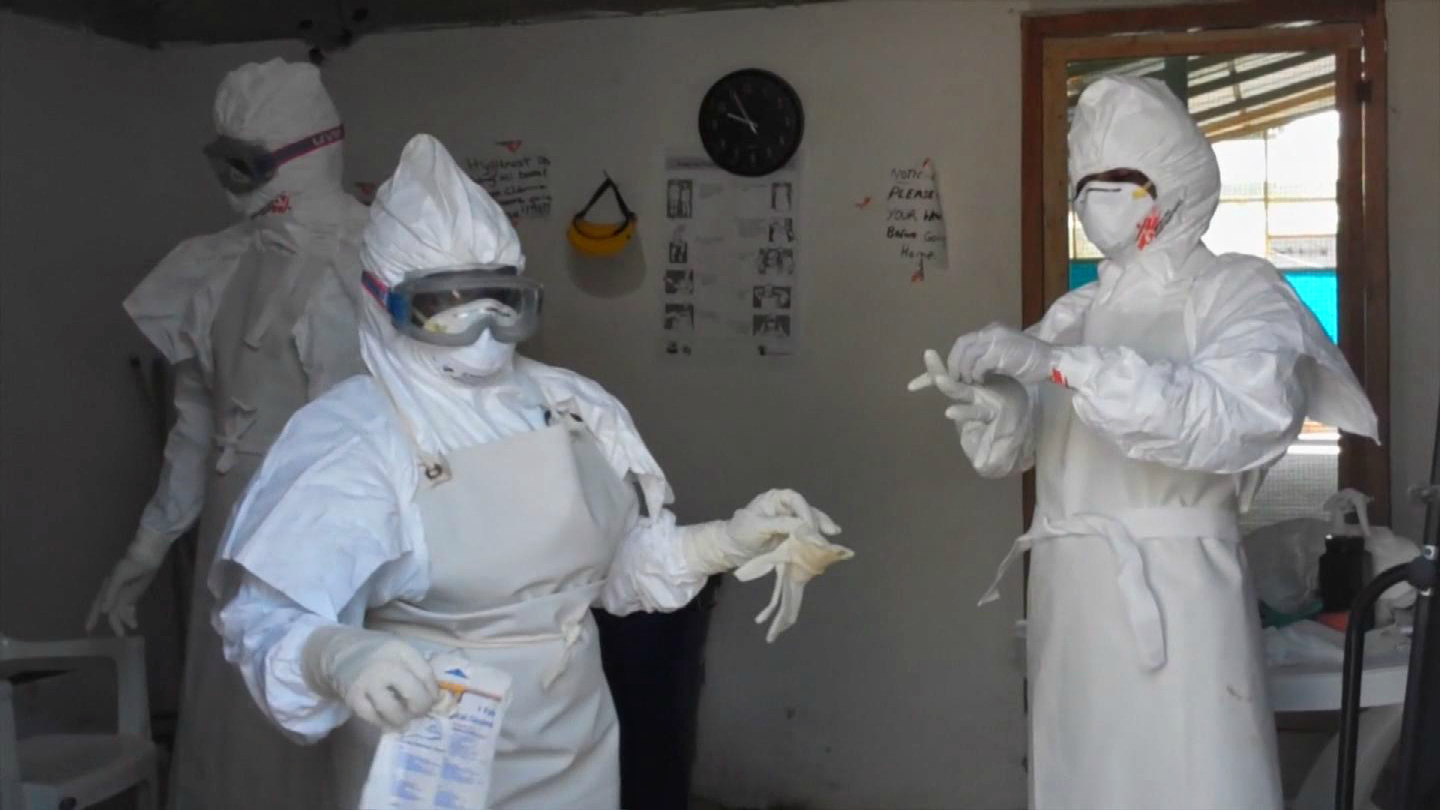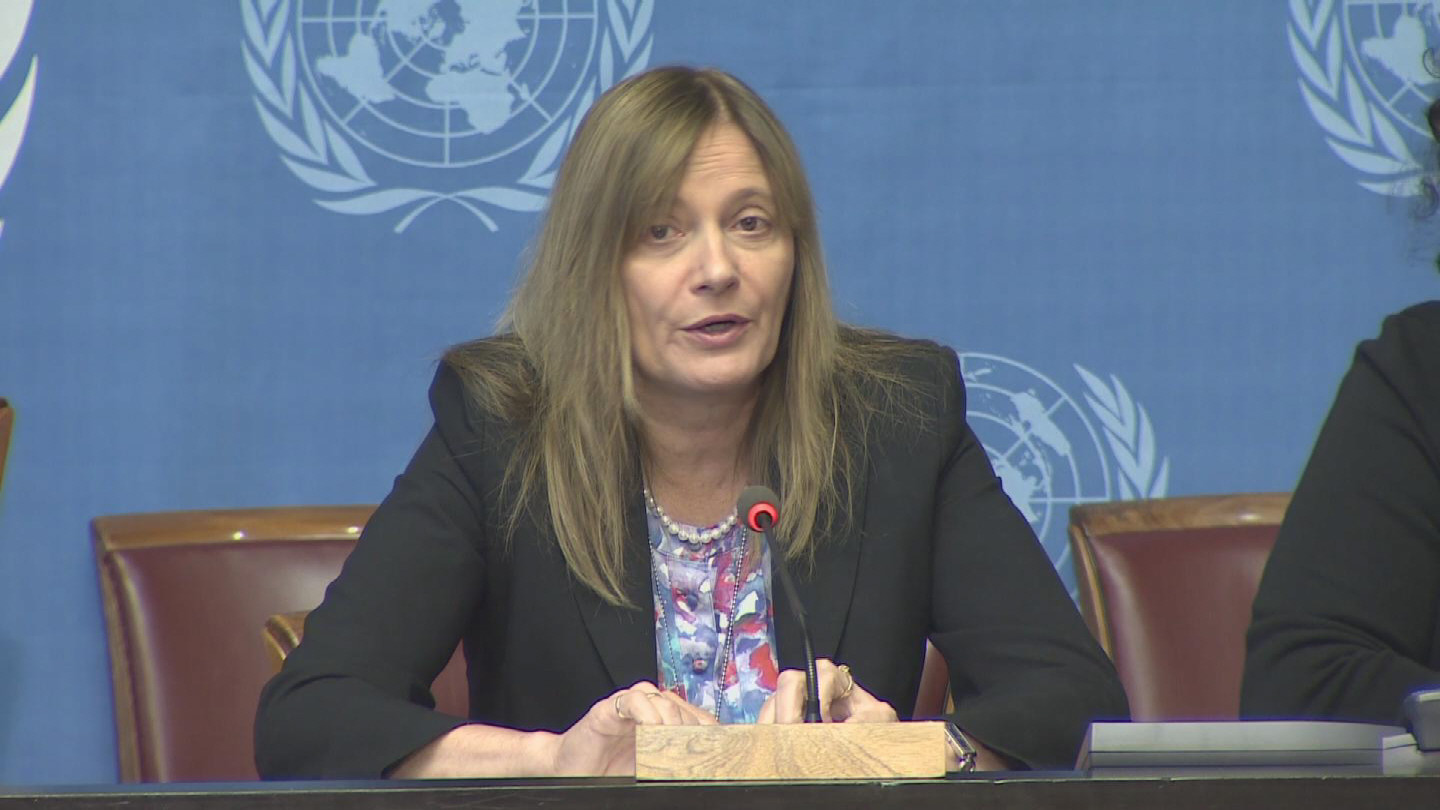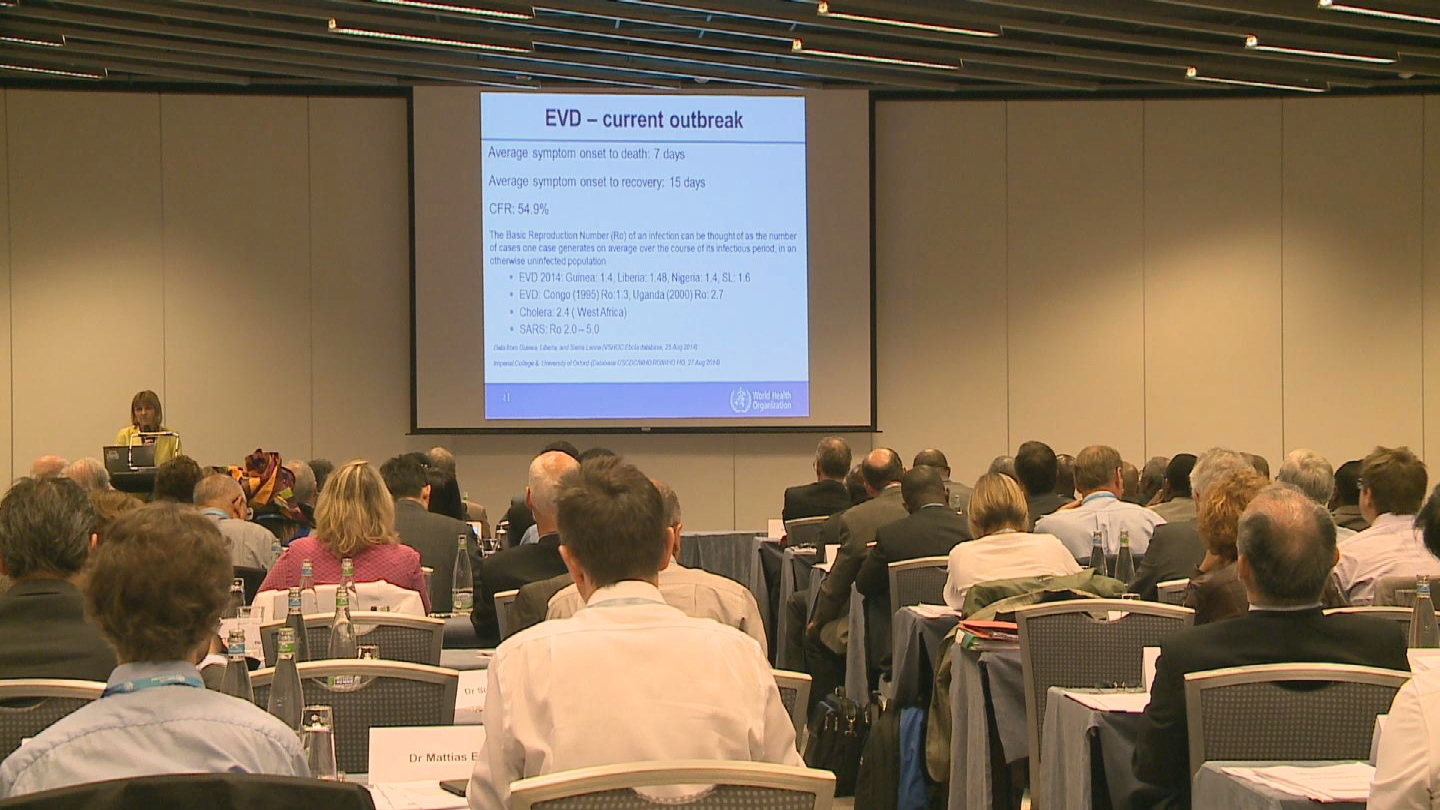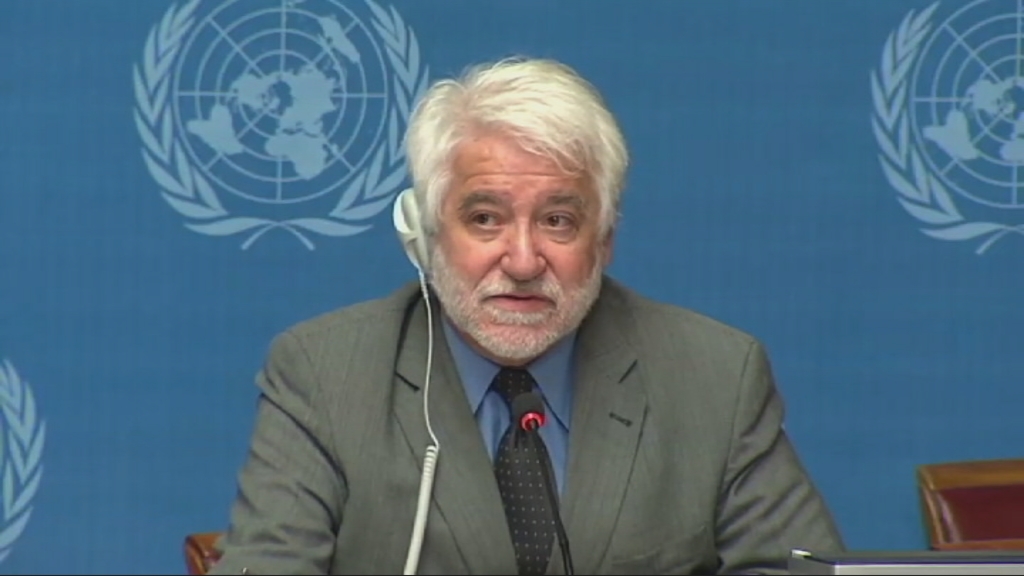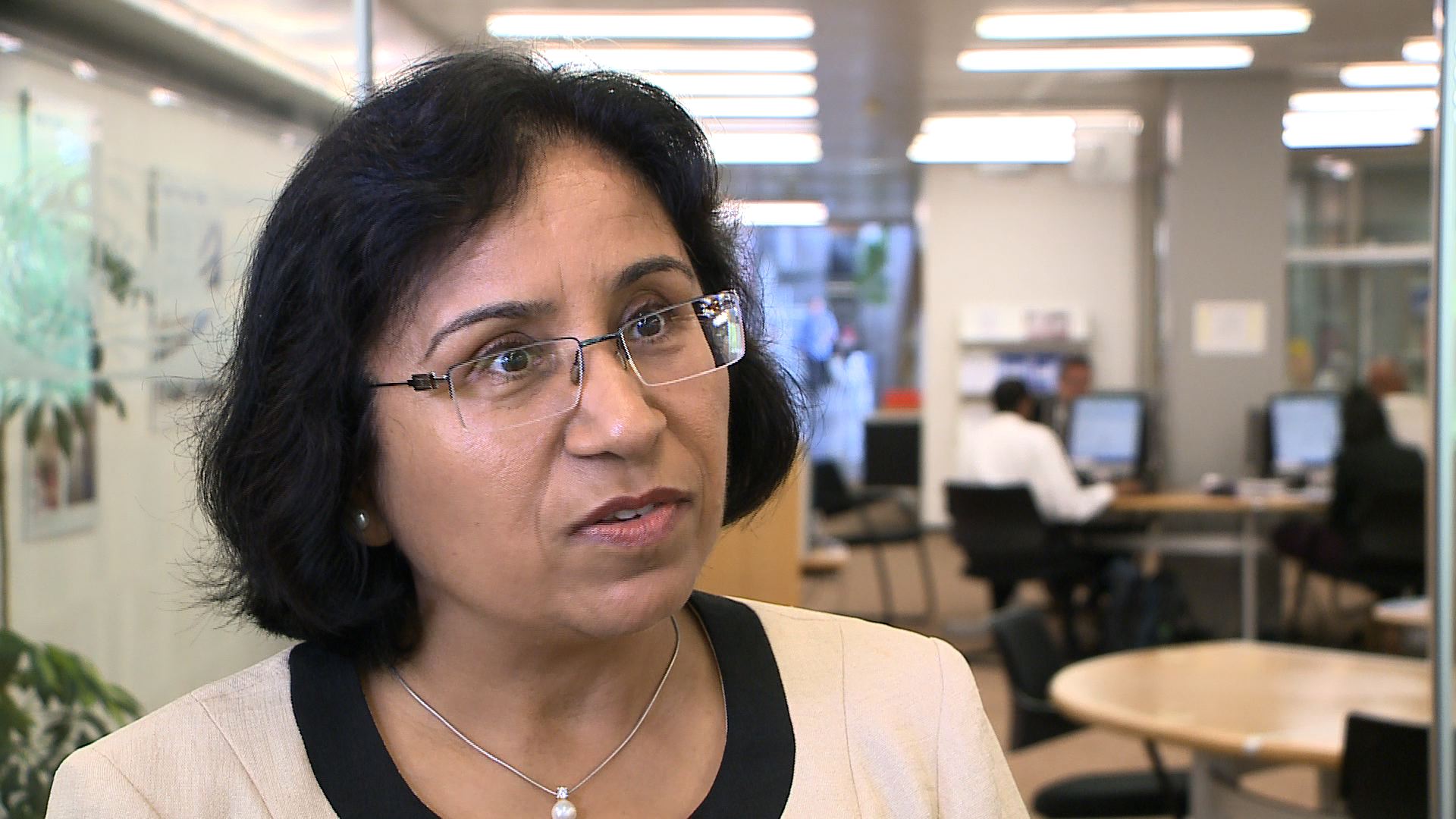WHO / HEPATITIS REPORT
Download
There is no media available to download.
Share
STORY: WHO / HEPATITIS REPORT
TRT: 02:42
SOURCE: WHO
RESTRICTIONS: NONE
LANGUAGE: ENGLISH / NATS
DATELINE: 21 APRIL 2017, WHO HEADQUARTERS, GENEVA, SWITZERLAND / FILE
FILE - JUNE 2015, EGYPT
1. Various shots, blood being drawn from patient
21 APRIL 2017, WHO HEADQUARTERS, GENEVA, SWITZERLAND
2. SOUNDBITE (English) Gottfried Hirnschall, Director, Department of HIV-AIDS and Global Hepatitis Programme:
“Viral hepatitis is a global health problem and requires an urgent response. More than 1.3 million people were dying of viral hepatitis, due to the consequences of viral hepatitis in 2015 alone.”
FILE - JUNE 2015, EGYPT
3. Med shot, patient being given a sonogram
21 APRIL 2017, WHO HEADQUARTERS, GENEVA, SWITZERLAND
4. SOUNDBITE (English) Gottfried Hirnschall, Director, Department of HIV-AIDS and Global Hepatitis Programme:
“325 million people have chronic hepatitis B and C, and if untreated many of them will develop severe liver disease, liver cancer, and will ultimately die. Hepatitis B and C can both be treated, and in the case of hepatitis C, it can be cured. The problem is, and that is what we outlined in the report, is that very few people actually know their hepatitis status. And even if they do, very few of them can actually access treatment.”
FILE - JUNE 2015, EGYPT
5. Close up, ultrasound imaging on screen
21 APRIL 2017, WHO HEADQUARTERS, GENEVA, SWITZERLAND
6. SOUNDBITE (English) Gottfried Hirnschall, Director, Department of HIV-AIDS and Global Hepatitis Programme:
“For hepatitis B we have a vaccine. Hepatitis B is a vaccine preventable disease and what we have seen over the last 20 years is that vaccine coverage has increased in most countries. Therefore we see fewer infections in children. For hepatitis C we know that it is transmitted through unsafe hospital practices and through injecting rug use. And in 2015 alone we have still seen 1.7 million new infections due to hepatitis C.”
FILE - JUNE 2015, EGYPT
7. Various shots, doctor giving patient a prescription
21 APRIL 2017, WHO HEADQUARTERS, GENEVA, SWITZERLAND
8. SOUNDBITE (English) Gottfried Hirnschall, Director, Department of HIV-AIDS and Global Hepatitis Programme:
“Hepatitis C can actually be cured through oral medicine taken during two to three months. And, even though the cost of these medicines has been very expensive, in many places it still is, overall the prices of these medicines have come down and it can cost as little as 200 dollars per person per cure in some countries.. So, WHO in the report calls for increasing the efforts in the area of prevention, but specifically also in providing access to testing, treatment and cure for hepatitis C.”
FILE - JUNE 2015, EGYPT
9. Med shot, doctor writing a prescription
New WHO data reveal that an estimated 325 million people worldwide are living with chronic hepatitis B virus (HBV) or hepatitis C virus (HCV) infection. The WHO Global hepatitis report, 2017 indicates that the large majority of these people lack access to life-saving testing and treatment.
As a result, millions of people are at risk of a slow progression to chronic liver disease, cancer, and death.
SOUNDBITE (English) Gottfried Hirnschall, Director, Department of HIV-AIDS and Global Hepatitis Programme:
“Viral hepatitis is a global health problem and requires an urgent response. More than 1.3 million people were dying of viral hepatitis, due to the consequences of viral hepatitis in 2015 alone.”
Viral hepatitis caused 1.34 million deaths in 2015, a number comparable to deaths caused by tuberculosis and HIV. But while mortality from tuberculosis and HIV has been declining, deaths from hepatitis are on the increase.
SOUNDBITE (English) Gottfried Hirnschall, Director, Department of HIV-AIDS and Global Hepatitis Programme:
“325 million people have chronic hepatitis B and C, and if untreated many of them will develop severe liver disease, liver cancer, and will ultimately die. Hepatitis B and C can both be treated, and in the case of hepatitis C, it can be cured. The problem is, and that is what we outlined in the report, is that very few people actually know their hepatitis status. And even if they do, very few of them can actually access treatment.”
Approximately 1.75 million people were newly infected with HCV in 2015, bringing the global total of people living with hepatitis C to 71 million. Although overall deaths from hepatitis are increasing, new infections of HBV are falling, thanks to increased coverage of HBV vaccination among children.
SOUNDBITE (English) Gottfried Hirnschall, Director, Department of HIV-AIDS and Global Hepatitis Programme:
“For hepatitis B we have a vaccine. Hepatitis B is a vaccine preventable disease and what we have seen over the last 20 years is that vaccine coverage has increased in most countries. Therefore we see fewer infections in children. For hepatitis C we know that it is transmitted through unsafe hospital practices and through injecting rug use. And in 2015 alone we have still seen 1.7 million new infections due to hepatitis C.”
Globally, 84 percent of children born in 2015 received the 3 recommended doses of hepatitis B vaccine. Between the pre-vaccine era (which, according to the year of introduction can range from the 1980s to the early 2000s) and 2015, the proportion of children under 5 years of age with new infections fell from 4.7 percent to 1.3 percent. However, an estimated 257 million people, mostly adults born before the introduction of the HBV vaccine, were living with chronic hepatitis B infection in 2015.
SOUNDBITE (English) Gottfried Hirnschall, Director, Department of HIV-AIDS and Global Hepatitis Programme:
“Hepatitis C can actually be cured through oral medicine taken during two to three months. And, even though the cost of these medicines has been very expensive, in many places it still is, overall the prices of these medicines have come down and it can cost as little as 200 dollars per person per cure in some countries.. So, WHO in the report calls for increasing the efforts in the area of prevention, but specifically also in providing access to testing, treatment and cure for hepatitis C.”
There is currently no vaccine against HCV, and access to treatment for HBV and HCV is still low.
WHO's Global Health Sector Strategy on viral hepatitis aims to test 90 percent and treat 80 percent of people with HBV and HCV by 2030.
The report notes that just 9 percent of all HBV infections and 20% of all HCV infections were diagnosed in 2015. An even smaller fraction – 8 percent of those diagnosed with HBV infection (1.7 million people) were on treatment, and only 7 percent of those diagnosed with HCV infection (1.1 million people) had started curative treatment during that year.
